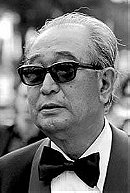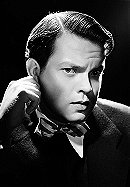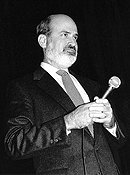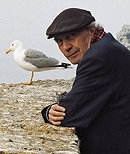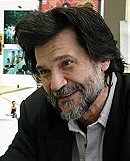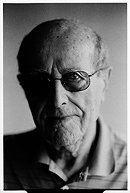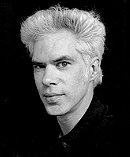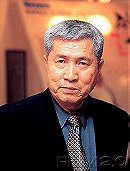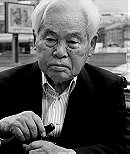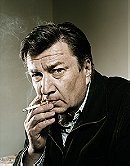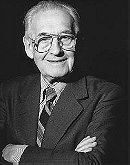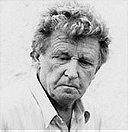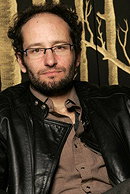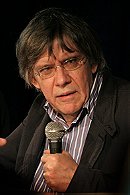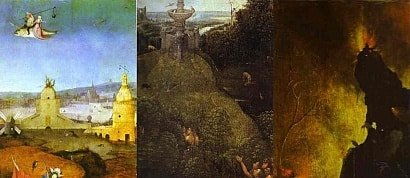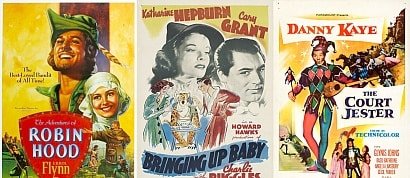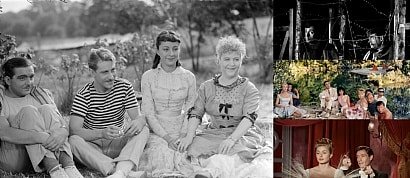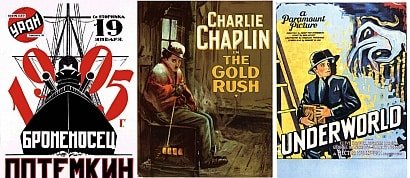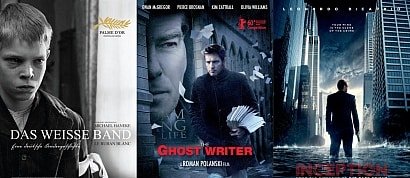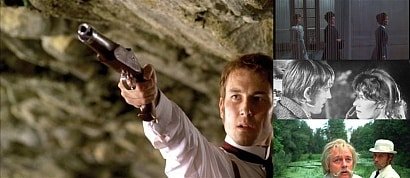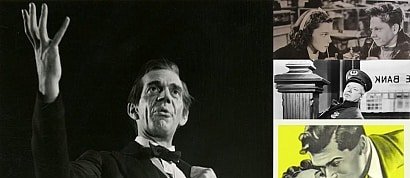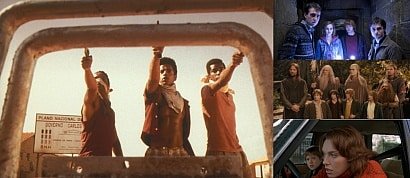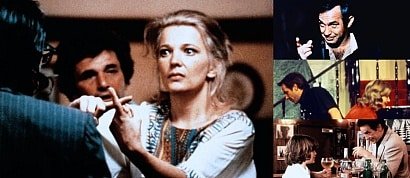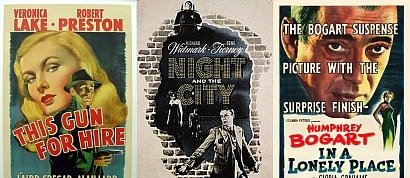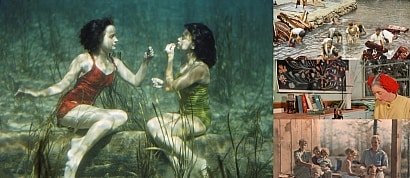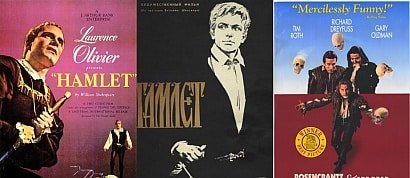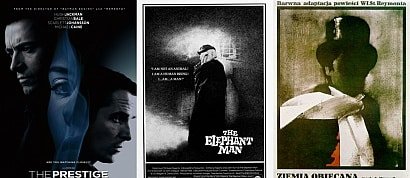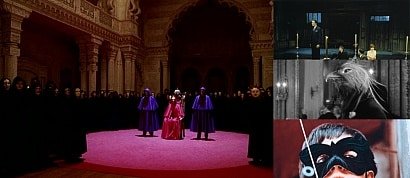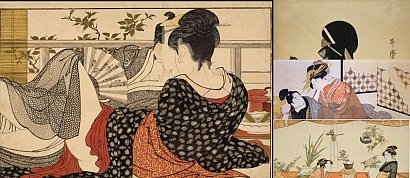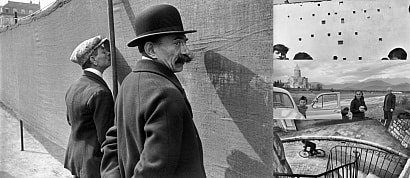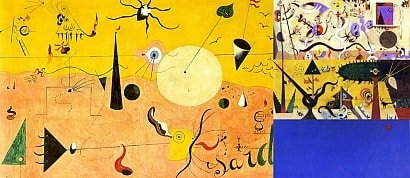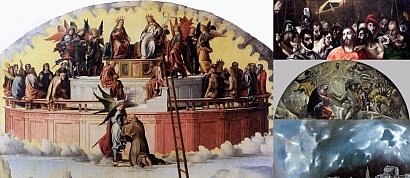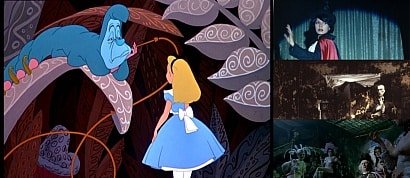Directors admiring Mizoguchi
Sort by:
Showing 26 items
Rating:
List Type:
“The Japanese director I admire the most”
“Now that Mizoguchi is gone, there are very few directors who can see the past clearly and realistically” (Kurosawa Akira)
“Now that Mizoguchi is gone, there are very few directors who can see the past clearly and realistically” (Kurosawa Akira)
Kenji's rating:


“The greatest of Japanese filmmakers. Or, quite simply, one of the greatest of filmmakers.” (Jean-Luc Godard)
Kenji's rating:


“Such an artist can convey the lines of the poetic design of being. He is capable of going beyond the limitations of coherent logic, and conveying the deep complexity and truth of the impalpable connections and hidden phenomena of life” (Tarkovsky)
Kenji's rating:


“You can compare only what is comparable and that which aims high enough. Mizoguchi, alone, imposes a feeling of a unique world and language, is answerable only to himself…” (Jacques Rivette)
Kenji's rating:


"the same style prevails and it is the most masterly I have come across"
Kenji's rating:


“Mizoguchi was, first of all, an outstanding poet who was able to express, with a fertile imagination and a sincere human profundity, the moral drama of his own generation. The destruction, the dreams, the forbidden loves which flow through his films are about the crisis of consciousness in modern Japan.” (Victor Erice)
Kenji's rating:


“I wanted to work in very anonymous apartments to show the situation of exile, the feeling of being nowhere. I used the game of space that I took from the Japanese director Mizoguchi. That’s the kind of space I wanted to use, like Japanese houses where a lot of doors that were open and you never know who was in the other room or how many people live there. Maybe 100, maybe ten people, maybe it’s empty.” (Raúl Ruiz, on Dialogues of Exiles)
Kenji's rating:


"Mizoguchi was totally and utterly Japanese. He was unique in that he was not in any way influenced by the directors of the West. He preferred long takes, and managed to squeeze into that one take all the trials and tribulations of life."(Kaneto Shindo)
Kenji's rating:


Directors round Mizoguchi : mubi.com/lists/699 - this also has directors admired by Mizoguchi
Mizoguchi Kenji was championed by the critics turned director at Cahiers du Cinéma in the 50s (and also Positif), e.g Godard and Rivette, though it may be his influence on them is not as apparent as on some others. Angelopoulos acknowledged Mizo and Welles as his two main influences, Mizo for his sense of off-screen space, and a scene late in Ugetsu in particular came to my mind watching The Travelling Players and Ulysses’ Gaze.
Together with Polish director Andrzej Wajda, in the early 1990s Terrence Malick set out to stage a theatre version of Sansho the Bailiff, whose influence can be seen in The Thin Red Line and The New World, as well as, albeit briefly, in Bertolucci’s 1900. Bertolucci placed Sansho second in his list for Sight and Sound. The Japanese director Shindo, an assistant to Mizo, revered and directed a documentary on him in the 70s. Tarkovsky likened him to a soaring soul, and proved himself a long take master too. Im Kwon-taek from South Korea is clearly influenced by Mizo, e.g Sopyonje and Chunhyang, and film expert David Bordwell has likened Hou Hsiao-Hsien to Mizo in his staging and long takes (considering his work, even if inadvertently, as similar to Mizo as it is to Ozu). I also noted the lack of close ups in the beautiful (and again quite Ozu-esque) Maborosi by Koreeda; a trait of Mizo’s especially in the 30’s (eg the excellent Straits of Love and Hate). Jarmusch and the Kaurismakis are also professed admirers (Mika Kaurismaki picked Ugetsu for Sight and Sound) but Bresson would seem a much more obvious influence on Aki. Two old-timers from the Iberian peninsula, Erice and Portugal’s Manoel de Oliveira (now 102) are also admirers while Jean-Marie Straub has said what he was trying to achieve in cinema was a combination of Ford and Mizoguchi.
In the 2012 Sight & Sound poll, Martin Scorsese picked Ugestu Monogatari in his top 10 (as did Oliveira), while Carlos Reygadas chose Sansho the Bailiff. I have it on good authority that the Indonesian-based Welsh director Gareth Evans is a big fan.
The Indian director Ritwik Ghatak’s Cloud-Capped Star strikes me as a very Mizoguchian film, with its beauty and self-sacrificing heroine (helping her brother’s artistic career, similarly to Story of the Late Chrysanthemums), and even its expressionist moments reminded me of a storm scene in Lady of Musashino, though that is more likely coincidental.
Mizoguchi Kenji was championed by the critics turned director at Cahiers du Cinéma in the 50s (and also Positif), e.g Godard and Rivette, though it may be his influence on them is not as apparent as on some others. Angelopoulos acknowledged Mizo and Welles as his two main influences, Mizo for his sense of off-screen space, and a scene late in Ugetsu in particular came to my mind watching The Travelling Players and Ulysses’ Gaze.
Together with Polish director Andrzej Wajda, in the early 1990s Terrence Malick set out to stage a theatre version of Sansho the Bailiff, whose influence can be seen in The Thin Red Line and The New World, as well as, albeit briefly, in Bertolucci’s 1900. Bertolucci placed Sansho second in his list for Sight and Sound. The Japanese director Shindo, an assistant to Mizo, revered and directed a documentary on him in the 70s. Tarkovsky likened him to a soaring soul, and proved himself a long take master too. Im Kwon-taek from South Korea is clearly influenced by Mizo, e.g Sopyonje and Chunhyang, and film expert David Bordwell has likened Hou Hsiao-Hsien to Mizo in his staging and long takes (considering his work, even if inadvertently, as similar to Mizo as it is to Ozu). I also noted the lack of close ups in the beautiful (and again quite Ozu-esque) Maborosi by Koreeda; a trait of Mizo’s especially in the 30’s (eg the excellent Straits of Love and Hate). Jarmusch and the Kaurismakis are also professed admirers (Mika Kaurismaki picked Ugetsu for Sight and Sound) but Bresson would seem a much more obvious influence on Aki. Two old-timers from the Iberian peninsula, Erice and Portugal’s Manoel de Oliveira (now 102) are also admirers while Jean-Marie Straub has said what he was trying to achieve in cinema was a combination of Ford and Mizoguchi.
In the 2012 Sight & Sound poll, Martin Scorsese picked Ugestu Monogatari in his top 10 (as did Oliveira), while Carlos Reygadas chose Sansho the Bailiff. I have it on good authority that the Indonesian-based Welsh director Gareth Evans is a big fan.
The Indian director Ritwik Ghatak’s Cloud-Capped Star strikes me as a very Mizoguchian film, with its beauty and self-sacrificing heroine (helping her brother’s artistic career, similarly to Story of the Late Chrysanthemums), and even its expressionist moments reminded me of a storm scene in Lady of Musashino, though that is more likely coincidental.
Added to
People who voted for this also voted for
Art by Hieronymus Bosch
Favorite Lists from Other Listal Members
Jean Renoir's Filmography
LUIS BUÑUEL favorite movies
2010 needs a Top 10
Chekhov on film
The Movies of 1940
550 FAVOURITES MOVIES EVER ΒΥ ΝΙΚΙ
Director John Cassavetes, ranked
a few fav Noir
Hungary
1970's: Top 50
PHOTOS | J. Baylor Roberts
William Shakespeare in cinema
Period Dramas-The Victorian Era 1837-1901
More lists from Kenji
Secret Societies
Japanese Artists: Utamaro
Henri Cartier-Bresson Photos
The Best of Miro
Spanish Paintings
45 Films: Kenji v The Vatican
Curiouser and Curiouser
 Login
Login

 8.8
8.8
 0
0
